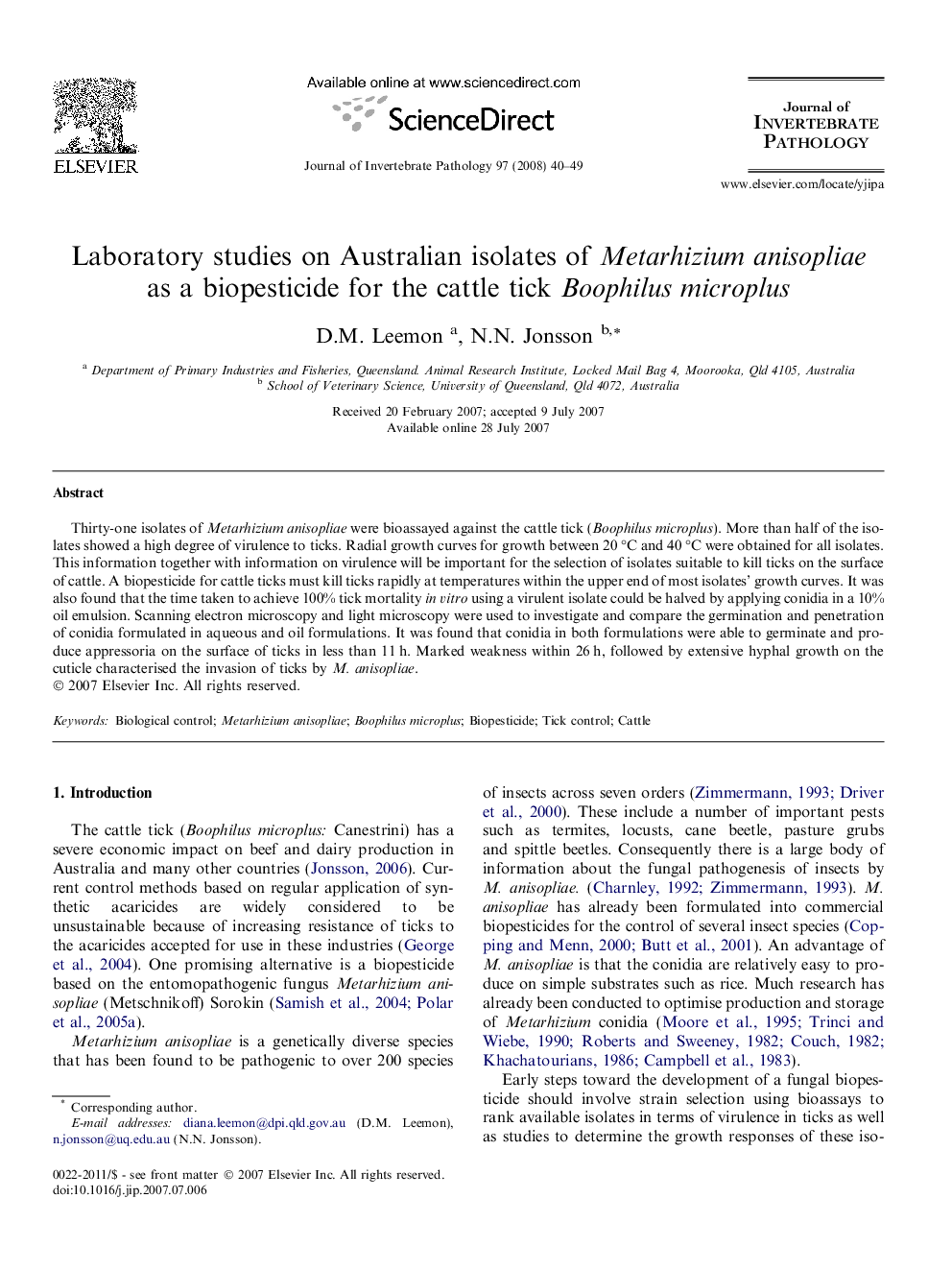| Article ID | Journal | Published Year | Pages | File Type |
|---|---|---|---|---|
| 4558530 | Journal of Invertebrate Pathology | 2008 | 10 Pages |
Thirty-one isolates of Metarhizium anisopliae were bioassayed against the cattle tick (Boophilus microplus). More than half of the isolates showed a high degree of virulence to ticks. Radial growth curves for growth between 20 °C and 40 °C were obtained for all isolates. This information together with information on virulence will be important for the selection of isolates suitable to kill ticks on the surface of cattle. A biopesticide for cattle ticks must kill ticks rapidly at temperatures within the upper end of most isolates’ growth curves. It was also found that the time taken to achieve 100% tick mortality in vitro using a virulent isolate could be halved by applying conidia in a 10% oil emulsion. Scanning electron microscopy and light microscopy were used to investigate and compare the germination and penetration of conidia formulated in aqueous and oil formulations. It was found that conidia in both formulations were able to germinate and produce appressoria on the surface of ticks in less than 11 h. Marked weakness within 26 h, followed by extensive hyphal growth on the cuticle characterised the invasion of ticks by M. anisopliae.
